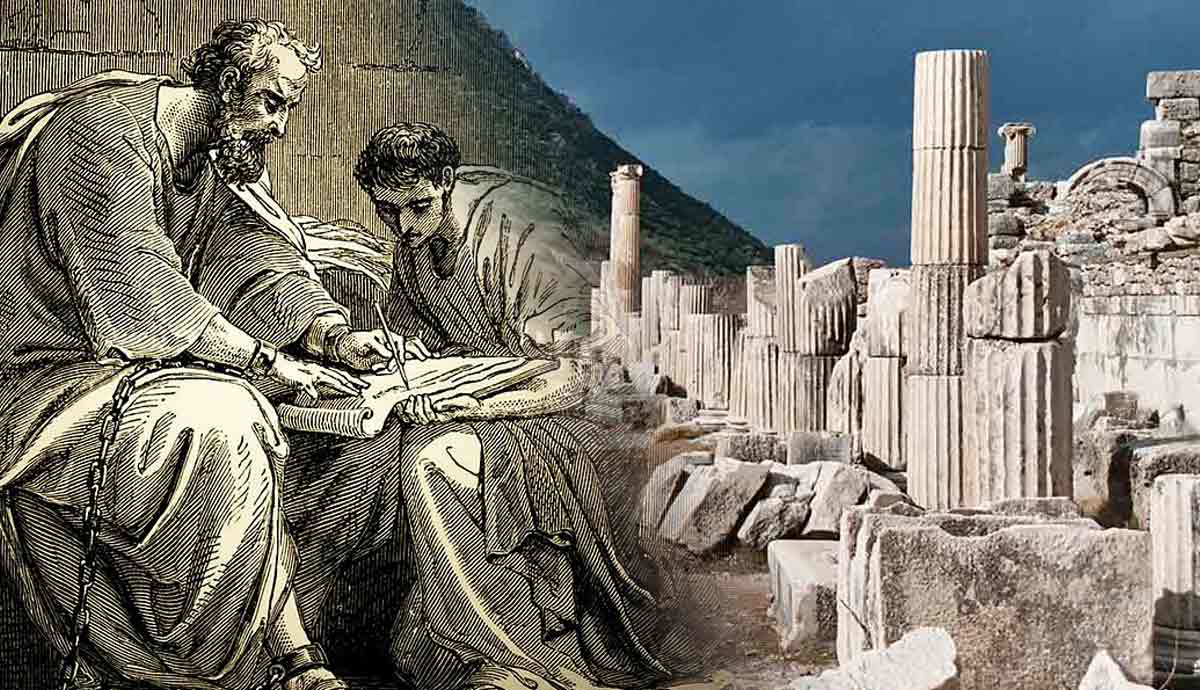
By the first century CE, Ephesus was already ancient. Established sometime around 1000 BCE in what is now Turkey on with access to the Aegean Sea, Ephesus had played an important role in the growth of Greek history. The Temple of Artemis, one of the seven wonders of the ancient world, was built in Ephesus around 550 BCE and rebuilt at least once. Over time, it would be absorbed into the Roman Empire and became the capital of proconsular Asia.
How Did the Church Get Established in Ephesus?

The Apostle Paul would plant a church in Ephesus on his second missionary journey around 52 CE and spent significant time there on his third missionary journey in 54-56 CE. When Paul arrived, the church there had been organized by a small group of disciples of John the Baptist and had little knowledge of the growing Christian faith. As he would teach in the synagogue, Paul also met opposition from Jewish religious leaders.
What Oppositions Did Paul Meet?

Because of the large temple in the city, worship of the Greek goddess Artemis (Diana to the Romans) was extensive and Paul met significant opposition from the pagan worshipers, nearly causing a riot:
Acts 19:23-27
“23 About that time there arose no little disturbance concerning the Way. 24 For a man named Demetrius, a silversmith, who made silver shrines of Artemis, brought no little business to the craftsmen. 25 These he gathered together, with the workmen in similar trades, and said, “Men, you know that from this business we have our wealth. 26 And you see and hear that not only in Ephesus but in almost all of Asia this Paul has persuaded and turned away a great many people, saying that gods made with hands are not gods. 27 And there is danger not only that this trade of ours may come into disrepute but also that the temple of the great goddess Artemis may be counted as nothing, and that she may even be deposed from her magnificence, she whom all Asia and the world worship.”
What Was Paul’s Epistle to the Ephesians?

Paul would also eventually write a theologically rich epistle to the Ephesians. A few years later, the apostle John would mention the Ephesian church in the book of Revelation. He would address their problem as having “abandoned the love you had at first,” even though the church had been able to keep out false doctrines.
Ignatius of Antioch would write a letter to the church of Ephesus in the second century, and Eusebius would record in the 300s CE in his writings that Timothy, a disciple of Paul and a recipient of two letters, was eventually the bishop there.
What Happened to the Church After the New Testament period?

The Ephesian church would grow over time, even as the city waned due to silt buildup causing the city to extend further from the coast and rivers. In 263 the invading Goths destroyed the city, and it was rebuilt under the emperor Constantine the Great. In 431 CE the city would host the Council of Ephesus, the third of seven ecumenical councils of the early Christian church which dealt with the heresy of Nestorianism and other issues that arose at the time.
Ephesus remained an important city in the Byzantine empire for some time, but due to geographical issues and invasions it continued to wane, becoming a mere village by 1090 AD when the Seljuk Turks arrived, and was eventually abandoned and is now generally an archaeological site.










